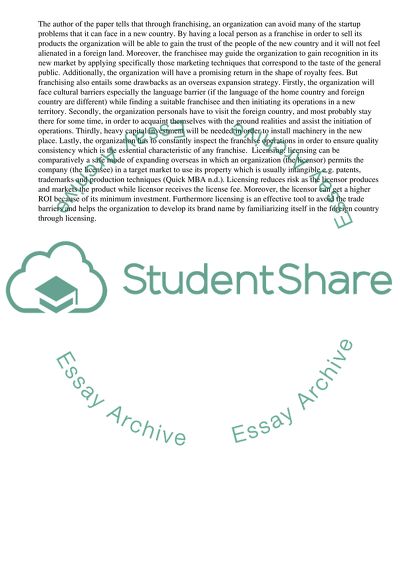Cite this document
(Market Entry Strategies Research Paper Example | Topics and Well Written Essays - 3000 words - 1, n.d.)
Market Entry Strategies Research Paper Example | Topics and Well Written Essays - 3000 words - 1. Retrieved from https://studentshare.org/business/1752361-international-business-finance
Market Entry Strategies Research Paper Example | Topics and Well Written Essays - 3000 words - 1. Retrieved from https://studentshare.org/business/1752361-international-business-finance
(Market Entry Strategies Research Paper Example | Topics and Well Written Essays - 3000 Words - 1)
Market Entry Strategies Research Paper Example | Topics and Well Written Essays - 3000 Words - 1. https://studentshare.org/business/1752361-international-business-finance.
Market Entry Strategies Research Paper Example | Topics and Well Written Essays - 3000 Words - 1. https://studentshare.org/business/1752361-international-business-finance.
“Market Entry Strategies Research Paper Example | Topics and Well Written Essays - 3000 Words - 1”, n.d. https://studentshare.org/business/1752361-international-business-finance.


